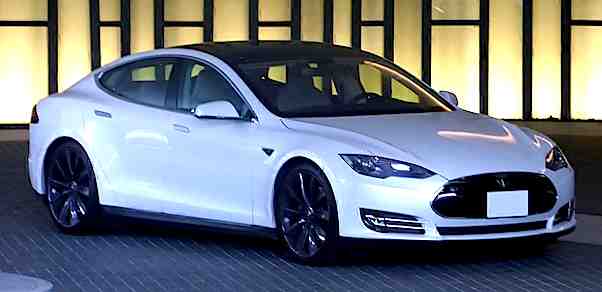
Tesla, Inc. has an organizational structure that supports continuous business growth. A company’s organizational or corporate structure is the design and system that defines the patterns of interactions among the company’s components. In this automotive business case, the organizational structure takes a traditional form, considering the company’s managerial focus and control, along with limited operational expansion in the global market. As a manufacturer of electric automobiles, batteries, solar panels, and related transportation and energy solutions, Tesla uses its corporate structure to facilitate control of the organization. Elon Musk’s leadership effectiveness depends on the corporate structure’s strategic support for business growth and improvement. The company maximizes new strategies and manages its operational activities and objectives through its organizational structure. Tesla’s operations management relies on the effectiveness of the business structure in supporting strategic changes and implementations.
Tesla’s organizational structure creates capabilities for managerial control of the business despite its growing international operations. Growth increases complexity and challenges. Global expansion requires a broader set of capabilities and competencies to succeed in implementing Tesla’s generic strategy for competitive advantage and intensive strategies for growth. The automaker’s organizational design and structural characteristics facilitate communication to inform top-level managers regarding these challenges. Thus, the corporate structure supports decisions for Tesla’s corporate mission statement and corporate vision statement, which emphasize global leadership in the automotive and energy solutions markets.
Tesla’s Organizational Structure Type & Features
Tesla has a functional or U-form organizational structure. The unitary-form (U-form) structure uses organizational function as the main defining factor. For example, the company structure has a group of employees for engineering, and another for sales and service. Some structural characteristics of other types of corporate structure are also present in Tesla, although to a less significant extent. In this company analysis case, grouping based on business function stands as the most significant feature. The following are the characteristics of Tesla’s organizational structure:
- Function-based hierarchy (most important)
- Centralization
- Divisions
Function-Based Hierarchy. The most significant characteristic of Tesla’s corporate structure is the function-based hierarchy in its multinational organization. This hierarchy involves function-based departments, teams, or offices that oversee domestic and international operations. This organizational design feature is typically observed in traditional corporate structures, where companies aim to maintain strict managerial control of their operations. In this business analysis case, the following function-based departments represent the global hierarchy of Tesla’s organizational structure:
- Office of the Chief Executive Officer
- Finance
- Technology
- Global Sales and Service
- Engineering
- Human Resources
- Legal
Centralization. Tesla uses centralization in its organizational structure. The emphasis of centralization is managerial control over the entire organization through decisions that a central group or team generates. In this case, the heads of the offices of the global hierarchy form the corporation’s central headquarters, which control all operations. In this corporate structure, Tesla minimally supports the autonomy of its regional or overseas offices. The company’s headquarters make most of the decisions for overseas operations.
Divisions. This characteristic of the company structure involves product-based and geographical divisions in the automotive and energy solutions business. These divisions are used to implement different strategies and marketing campaigns, and to organize financial records and reports. The company’s main divisions in its corporate structure are (1) Automotive and (2) Energy Generation and Storage. These divisions are less significant than the function-based hierarchy of the organization. Also, Tesla’s organizational structure has the following geographical divisions used for financial reporting: (1) United States, (2) China, and (3) Other.
Implications, Advantages & Disadvantages of Tesla’s Structure
Tesla benefits from its organizational structure in terms of effective managerial control of multinational operations. Another advantage is the ease of implementing new strategies throughout the organization. Also, the regional divisions support financial reporting and analysis, and provide the foundation for future regionalization of strategies and tactics in the international automotive and energy markets. These advantages empower Tesla to use its corporate structure for further international growth and to build competitiveness against Toyota, Ford, General Motors, Honda, Nissan, Volkswagen, BMW, and other car manufacturers. The organizational structure enables central control of the development of competitive advantages and adds to the business strengths stated in the SWOT analysis of Tesla.
A disadvantage of Tesla’s organizational structure is the rigidity that limits rapid adjustment in the organization. For example, global centralization is a structural characteristic that limits the autonomous ability of overseas offices to readily respond to issues they experience in their respective regional automotive markets. To address this disadvantage, Tesla can increase the flexibility of its organizational structure for a corresponding increase in the level of autonomy of overseas offices. A corporate structure with a considerable degree of decentralization tends to be more effective in creating competitiveness against local firms in overseas markets.
References
- About Tesla, Inc.
- Albert, D. (2024). What do you mean by organizational structure? Acknowledging and harmonizing differences and commonalities in three prominent perspectives. Journal of Organization Design, 13(1), 1-11.
- Lekkerkerk, L. J. (2024). The Model Innovation and Organizational Structure: A Zoom Lens on Organizational Structure. In European Perspectives on Innovation Management (pp. 13-44). Cham: Springer International Publishing.
- Tesla, Inc. – Corporate Governance.
- Tesla, Inc. – Form 10-K.
- Tesla, Inc. – Locations.
- U.S. Department of Commerce – International Trade Administration – Automotive Industry.